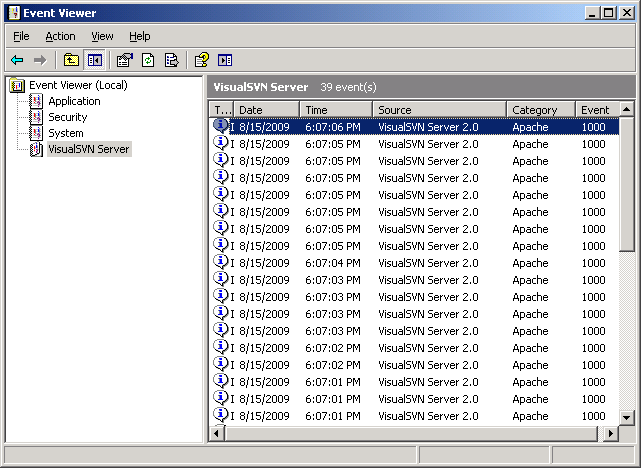Microsoft hit the headlines when it withdrew support for Windows Server 2003 back in July 2015. Even now, despite the constant warnings by tech analysts and pundits, there are many who haven’t upgraded their 2003 server. It could be that they can’t, or simply don’t want to. How do they keep things rolling? More crucially, will they be able to run Windows Server 2003 indefinitely on their system? Let’s find out.
Why not upgrade?
Before Microsoft withdrew support, businesses had more than a year to upgrade their servers, but many still didn’t. Care to wonder why? Were they too busy watching “Two and a Half Men” reruns? You know the good ones, the ones with Charlie Sheen (when Charlie left, the show turned pathetic and wimpish).
No, a real reason is because 2003 was, and still is, good enough for many companies. When you have a server that’s perfectly serviceable and meets all your requirements, why would you want to go through the hassle of an upgrade? This is an attitude that persists in the business would. Why fix it if it is not broken?
Microsoft was at the top of its game when they produced this server, and it’s a fantastic product. Windows Server 2003 R2 allowed businesses to cut costs, and this explains the lack of motivation to upgrade.
Another reason why some businesses are hesitant to take the leap could be the widespread usage of 32-bit applications. It’s not easy to upgrade these apps, and businesses are unwilling to risk changing architectures. For example, in various production and manufacturing companies, special software is used that doesn’t always have an upgrade. These systems are limited by their external dependencies and their software.
Familiarity is the third reason. When you know all the ins and outs, the cost of running a particular system drops drastically. Shifting to a newer platform seems like a chore, and you’re better off exhausting all your other options before you give migration a thought. Moreover, some companies don’t rely on technology as much as Microsoft would like. For them, upgrading to a more recent version of Windows Server seems unnecessary.
Ironically, the organizations most likely to keep running Server 2003 post end of life and support date are also the ones at risk. Why? Because these firms are under regulatory compliance limitations. A large number of these companies have proprietary and internal apps built to run specifically on Windows Server 2003. They simply can’t migrate away from the current operating system.
Keeping safe
In a world where digital threats are becoming increasingly hostile (certainly when you use the word password as your actual password!), organizations that haven’t migrated away from Windows Server 2003 need to boost their security.
Limiting vulnerabilities means employing different tactics. These measures aren’t quite as effective as what the latest servers offer, but moderate protection is better than no protection at all.
Need for patches

Companies running Windows Server 2003 should have the last stable build – the one with the least number of vulnerabilities. It’s your responsibility to check whether all the security patches are up to date and properly installed. This can often be difficult to gauge, so make sure you use an official patch management tool to assist with the process.
Do you access the Internet from your system? If yes, you should focus on the firewall. Always keep it turned on and never run an outdated build.
Tracking actions

When you’re using a Windows Server 2003 system, you cannot afford to be careless. Make sure you’ve switched on logging so that a record exists of who’s accessing what. Check the logs occasionally to spot any signs of intrusion. As an added precaution, you could enable alarms that would warn you about any security breaches to your server. The quicker you’re able to detect a particular problem, the faster you can take care of it.
Isolation is key
You must know by now how dangerous the Internet is. No, we’re not talking content-wise; we mean just how common it is for infection to spread throughout your server just because you accessed a dodgy website.
Thus, one effective safety measure is to limit access to the Internet when using Windows Server 2003. Make sure all unused ports remain closed. Moreover, it is recommended you limit user access to the server as much as you can. Any unnecessary users should be eliminated. At the same time, the server needs to be walled off as best as you can from the rest of the network.
Whitelisting
If you value your system, you must understand how dangerous it is to run random programs. Be cautious and give only a handful of programs permission to run on your system. Everything else needs to be blocked automatically.
For this purpose, you need to use a whitelisting program. Such programs create and manage a server whitelist. If you don’t trust a third-party application for the job, you can always go the Windows route and use the built-in Software Restriction Policy. You’ll find this option in the Group Policy settings. It won’t take long to create a whitelist.
Regular backups

The whole system needs to be backed up. You should do this without fail from time to time because it’s much more than a measly security measure. If there is some sort of software failure or hardware malfunction, these backups are going to save your organization. So, you can very well understand the importance attached to them.
Something else you have to do is check often to ensure the backups are all in place and can be recovered at any given time for your benefit. Since there is no longer any support for Windows Server 2003, it’s a fantastic idea to conduct backups frequently. This is also connected to the fact that your systems are more likely than not running old hardware.
Virtualization beckons
You might still be keeping Windows Server 2003 around for archival purposes. It’s possible that you have data saved in apps that are supported only by this version of the server. Perhaps you want to continue running your website until you figure out an effective way to migrate to a more recent server.
A fantastic option is to virtualize Windows Server 2003 as a guest OS and then run it on hosted Windows Server 2012. Your data remains safe and secure, and you’ll still get to access to your website without any hassle. This will also help in isolating your system server and protecting it.
For many organizations, Microsoft’s end of life and support for Windows Server 2003 meant little. Ultimately, it is the organization, rather than Microsoft, that is going to decide when their resources will be put out to pasture. Thus, like the “Transformers” and “Fast and Furious” movies, it seems like Windows Server 2003 is going to live on.



